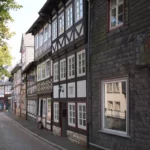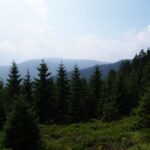Last Updated on 11/11/2023
The Goslar Rammelsberg mine, which fed the Goslar people for centuries, is still used today, but not for the mining of silver or iron, but for the mining of tourists.
The Rammelsberg mine has been in operation for a thousand years, from 968 to 1988.

Read about Goslar here.
Quedlinburg
Wernigerode
Brocken
Harz. 5. Thale, children program
Harz. Centre and East. Map of attractions
Harz. West. Map of attractions
This page details the mines and briefly about Hahnenklee and Oberharzer Wasserregal.
At first, those minerals were mined there that were closer to the surface and which at that time were able to extract: silver, copper, lead. Then they got to zinc and iron.
The oldest mines of the 12-13th centuries, more “modern” mines of the 18-19th centuries and mines of the 20th century have been preserved.
Hier much is called with the word “most”:
oldest adits in Germany (Rathstiefste Stollen, 12th century),
the oldest fortified by a wall in Europe (Feuergezähe Gewölbe, 13th century),
the oldest structure on the surface (Maltermeisterturm, 15th century),
burrows of 10 century.
Archaeological research has shown that open-cut mining was carried out here already in the 3rd century. The mine was built during the reign of Emperor Otto the Great in 968. For centuries, silver, copper, lead, zinc were mined on it, from the 18th century even gold. In addition to these basic ones, there are more than 100 minerals and their variations.
The surface buildings acquired their modern look under the Nazis, who attached great importance to the mining and rebuilt everything in four years.
Possible excursions
The visit consists of two parts: museum and excursion. When buying a ticket, an excursion or several excursions are selected. Tours are scheduled on time.
Some of them are standard, held several times a day. There are also less regular excursions of longer duration.
Tour Feuer und Wasser: Der Roeder-Stollen (Fire and water). Visitors can walk through the stollen system over 200 years old, see mechanisms, water wheels and mines. They will follow the path of water, which passes through the mountain using water wheels. The excursion takes place several times a day and lasts 1 hour and 15 minutes.
Tour Mit der Grubenbahn vor Ort: Bergbau im 20. Jahrhundert is dedicated to mining of the 20th century. Visitors will be able to see more modern mechanisms, ride a mountain train. The tour takes place several times a day and lasts one hour.
Read about this tour below.
Tour Abenteuer Mittelalter: Der Rathstiefste Stollen. This adit functioned in the 12th century; it was developed by hand, using picks and hammers. Until now, the water from the workings passes through this adit. The tour lasts 4 hours, the minimum age is 16 years old, it is necessary to book in advance.
Museum
There are museum buildings on the surface.
Building A is dedicated to the mineralogy and geology of Rammelsberg, building K to contemporary art, building M to cultural history (the life of miners, the history of technology), and building L hosts temporary exhibitions.
The museum part was rather disappointing. On the one hand, it seems to be in a modern style, with sound effects, in some places with screens. But the information is not enough or it is presented poorly. If you are interested in the object, there are no signs at all. Cultural objects from Goslar, on the contrary, with a bunch of information in small print. They seem to be giving headphones somewhere, but with children it is total uncomfortable. I would also like a printed text and go in my own tempo. After all, what about the hearing impaired? Video screens often didn’t work at all.
There were not so many machines and tools, and hardly any explanation about them, how they were used.
What I found interesting.

Mineral dyes.



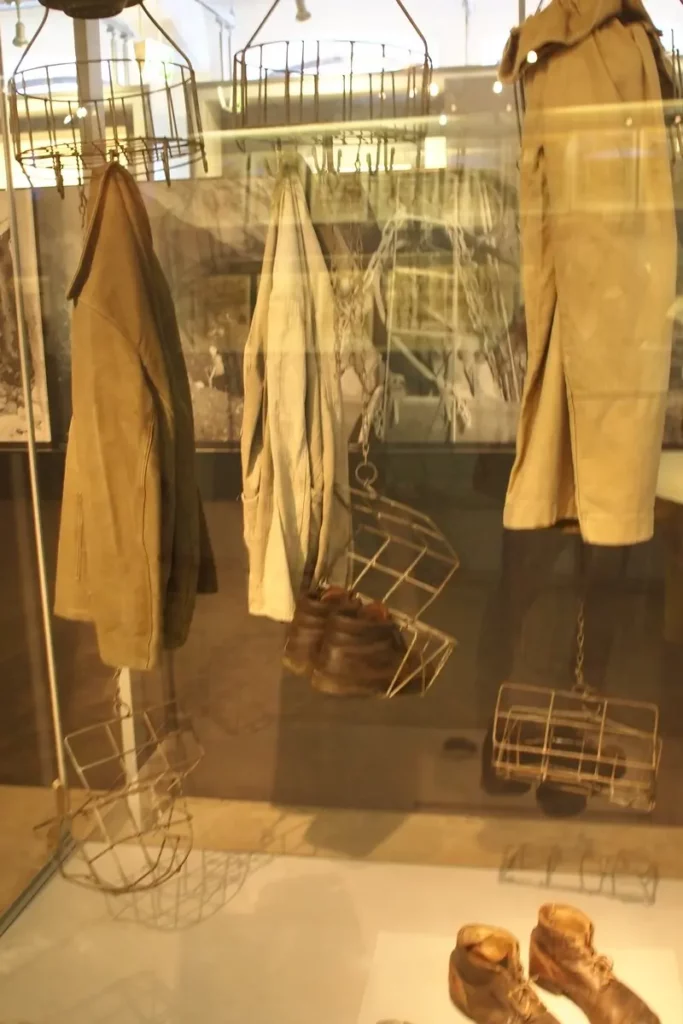
Model of an old mine. Unfortunately, it was difficult to photographe, it was reflected from any angle.



Try to lift the drill.
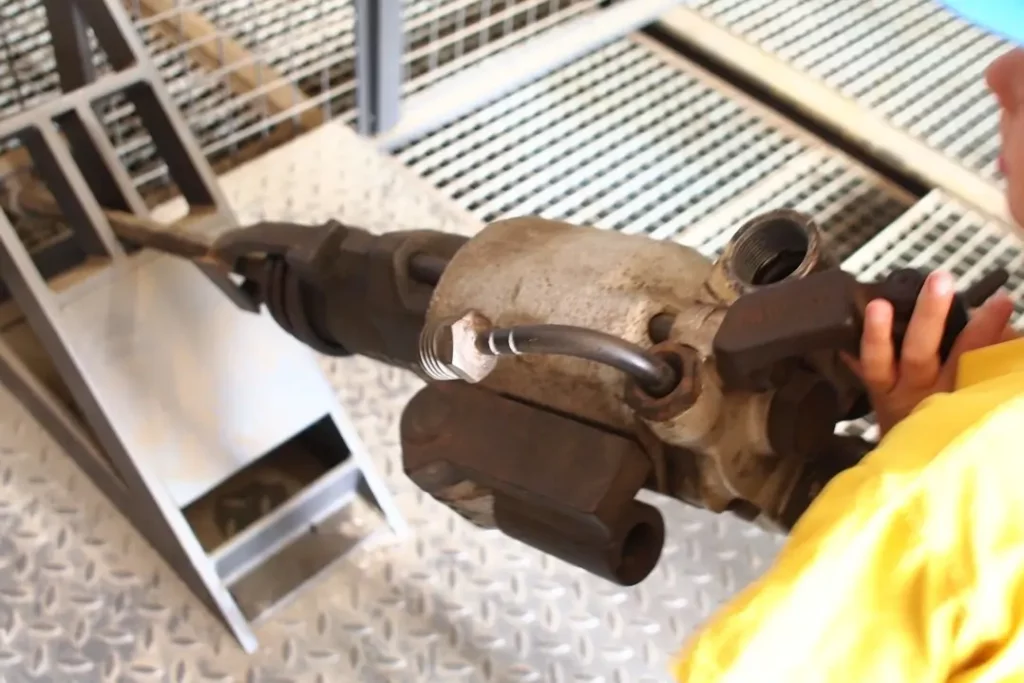
Hall with trains. Here the screen worked very well and reproduced the sound and process.
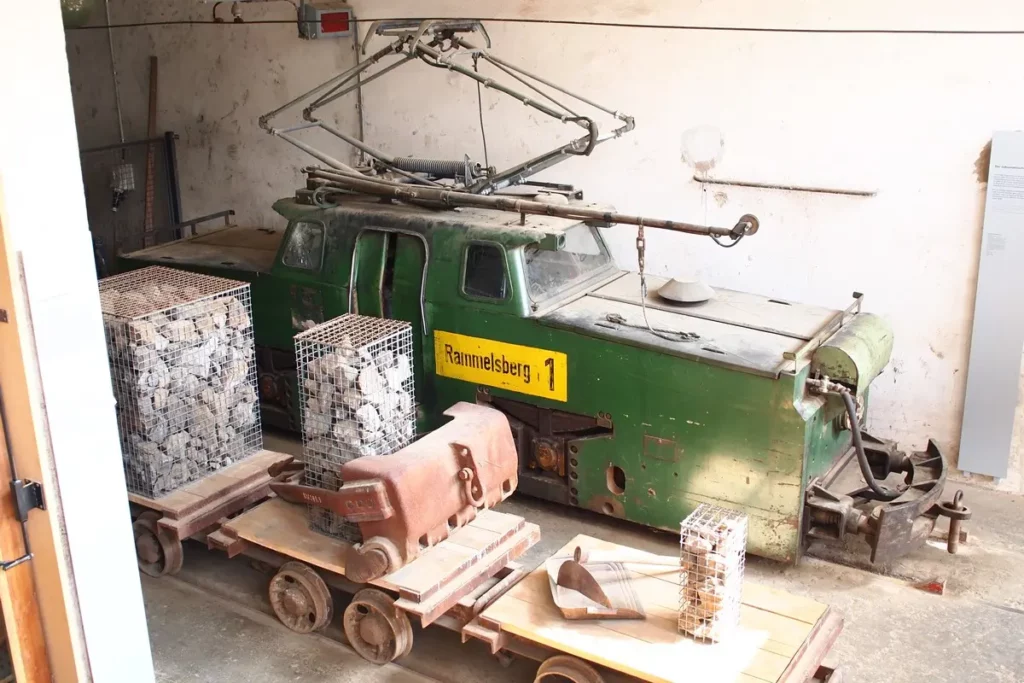
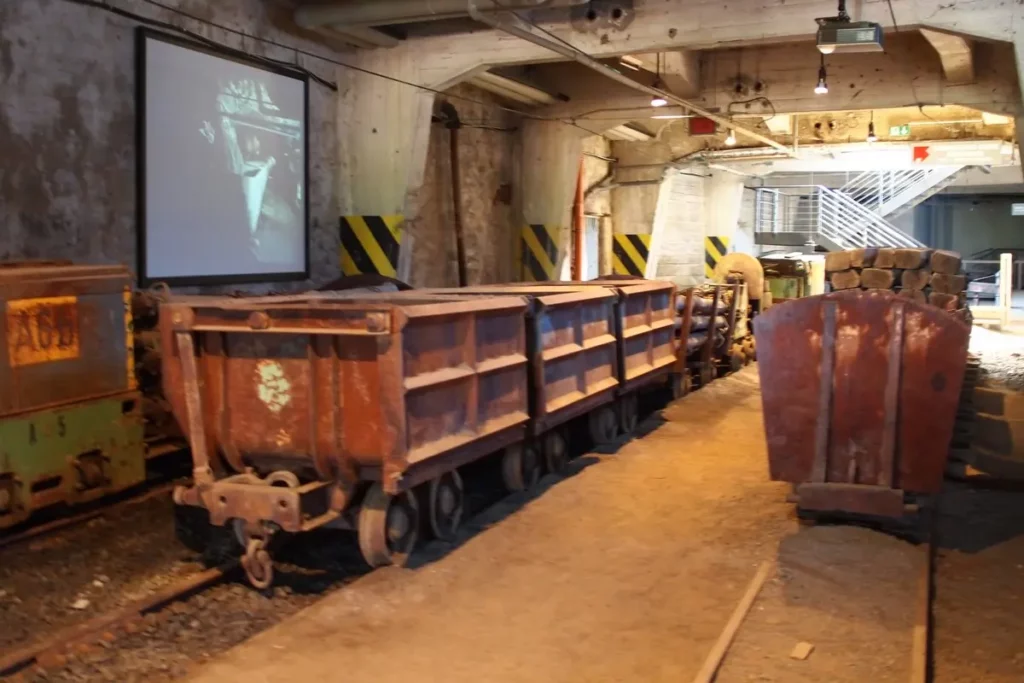
Hall with samples of ores and minerals. Different rocks have different content of substances.


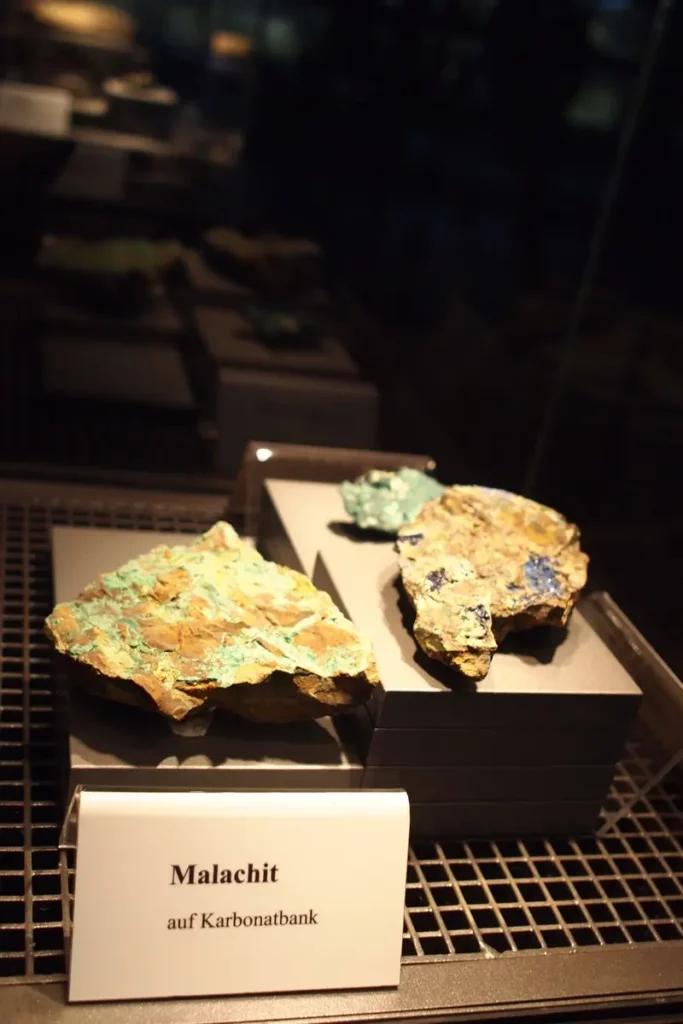
In the same building, there are many large mixers and crushers and a conveyor from tanks, but what they do and how they work is not explained.

Inclined elevator

Lamps from different eras are exhibited in a separate room. The first is the 17th century.
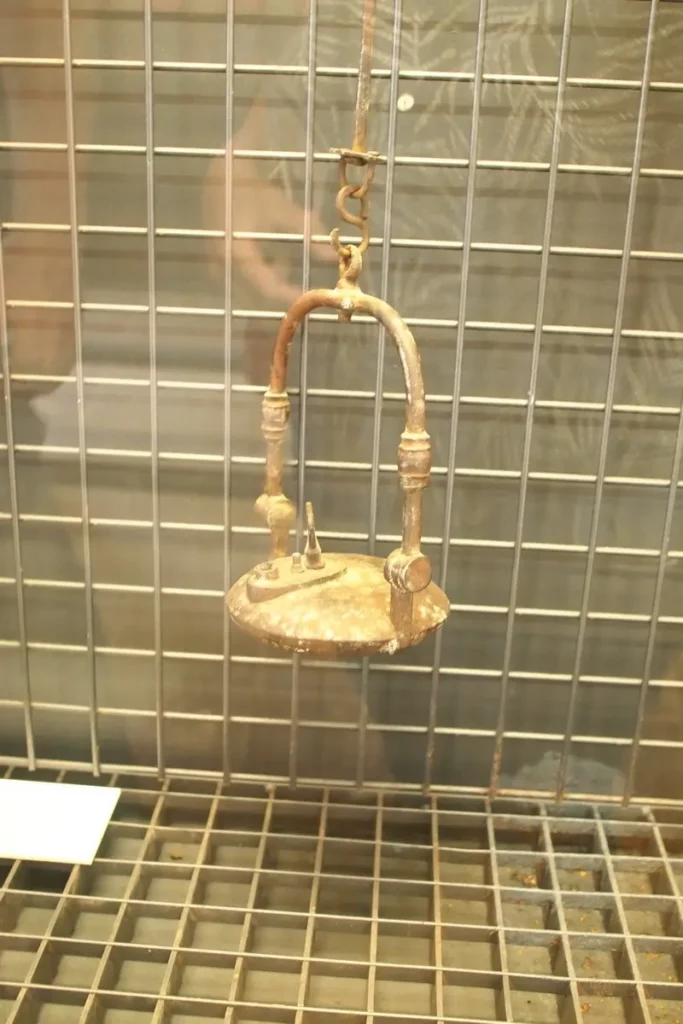
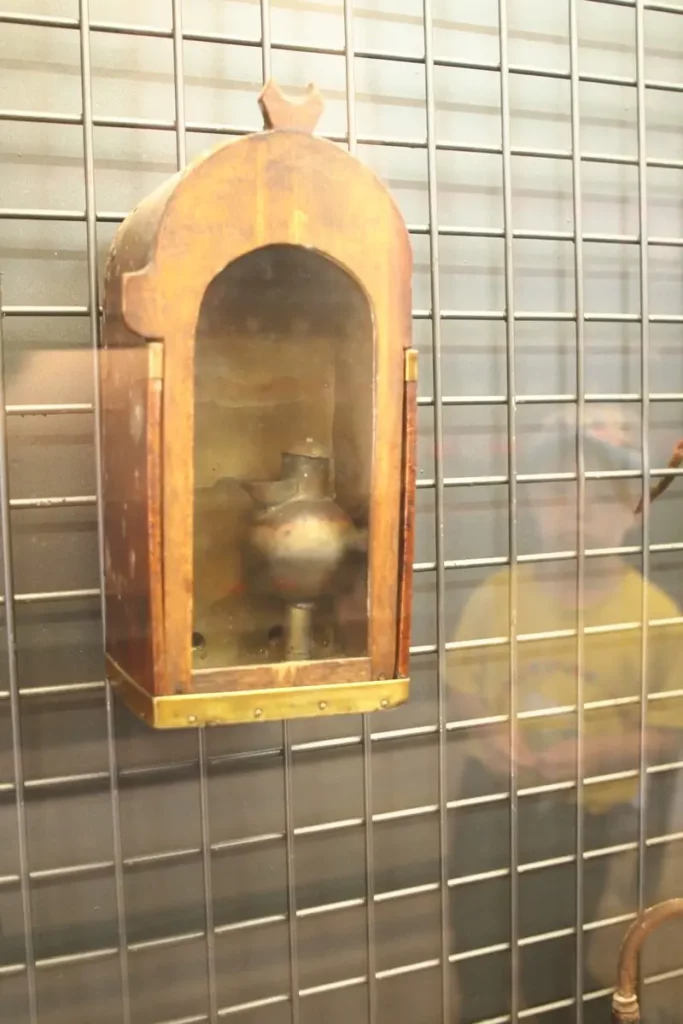
And a more modern carbide lamp. And the most modern ones were already on batteries and had to be recharged for a long time.
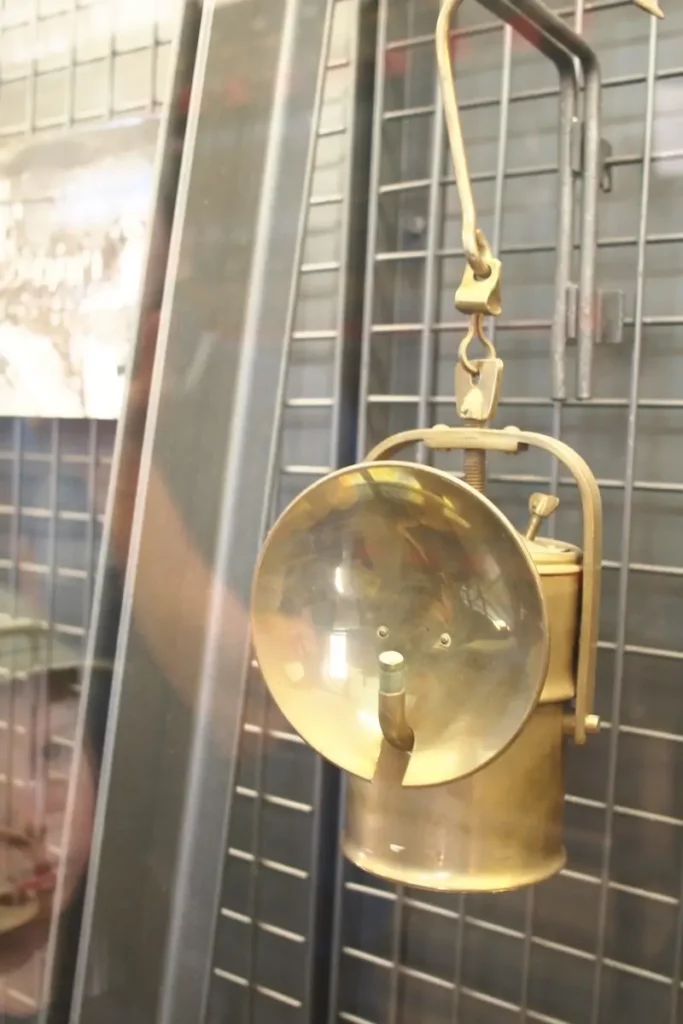
Excursion with the train
Let’s move on to the excursion. It turned out to be very interesting and clarified some things, that we didn’t understand in the museum. The group gathers in the hall where the miners were preparing to change.
Shared shower.

Work clothes. The ropes holding the clothes are detached from the hooks above the benches in the center – and the clothes are pulled down. This storage allows you to save space and dry your clothes at the same time. Red robes are for firefighters.

A bowl on top for rings and soap made of a special substance that allows you to wash underground dirt. By the way, my youngest child, who is famous for killing shoes on every vacation, this time also fell into the mud downstairs, which I have not been able to wash so far.
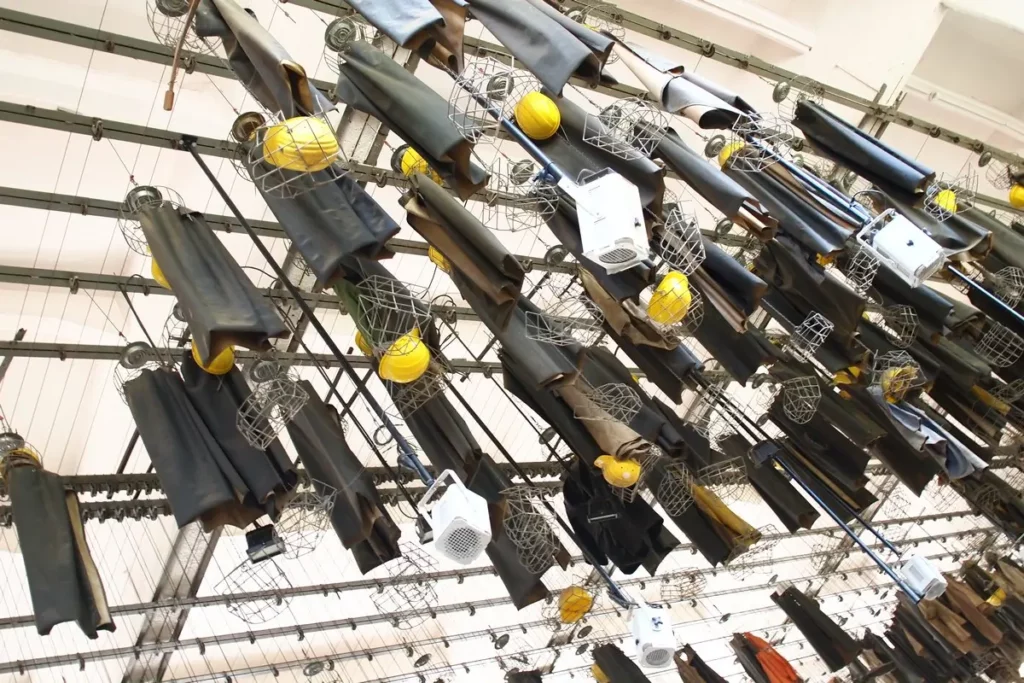
Let’s go down on this train. Inside you have to sit facing each other. The train chatters, and you can finally answer the child’s question: Why, in fact, tourists should wear helmets – they are not going to work?


They drove uns into a vertical elevator, but they just scared uns and didn’t send uns down. Part of the mine is flooded, but there are still enough kilometers of adits to make it easy to get lost.
The guide shows more modern mining methods and older ones, all the time in comparison. He says what the miners ate, which special words they used. He shows tools in action.
The working day began with breakfast (there is also a beer keg). Then the miners taken out burrows from another shift. They worked first by hands and with the help of ponies and dogs, then with the help of trains. For the last couple of hours they have drilled holes for explosions. When the shift left, the master conducted an explosion. What fell off was taken out by the next shift.
More modern drills.

Preparing for the explosion.

Everything that was mined was sent to the lowest floor of the mine, from where it rose 40 meters above the level from which the train departs (the gray tower on the right, at the top). From there, the ore passed through all these buildings on the slope, where it was gradually ground from blocks to practically powder.

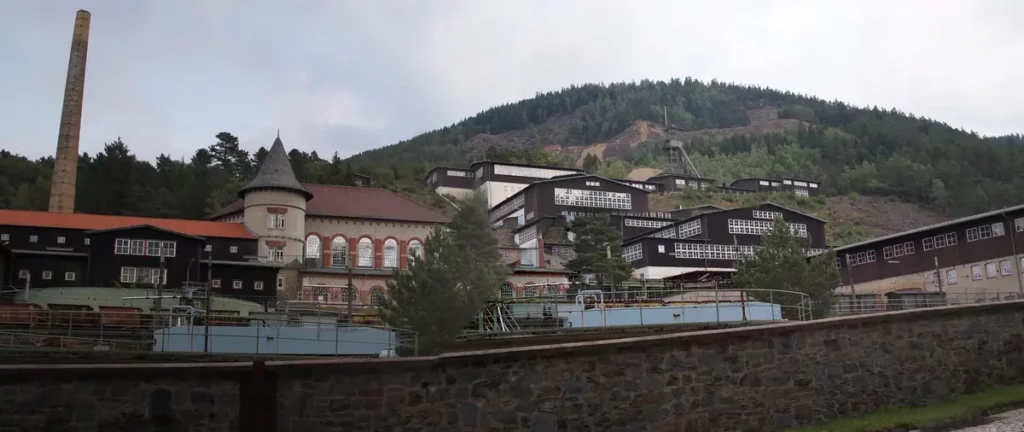
Oberharzer Wasserregal, Okerstausee and Hahnenklee
Oberharzer Wasserregal (water system of the Upper Harz) was recently added to the already rather large list of attractions included in UNESCO, in Harz in general and in Goslar in particular. This is a system of ponds, dams, canals and water conduits that was created from the 16th to the 19th centuries. It was created to service mining in the region.
The system is maintained in working order, since part of it is used for flood protection, part is a source of drinking water. In addition, rare crayfish are found in ponds, which in most water bodies in Europe died at the end of the 19th century during the crayfish plague.
Walking routes are created around ponds and along waterways, but so far there is not much information about them. Very general plans can be viewed hier and hier. Some of routes – Link. The main group of ponds is located around the village Clausthal-Zellerfeld.
Hahnenklee – a village at an altitude of 570 m, the “district” of Goslar, 16 km from it. You can get from Goslar by bus 830. The road (number 241) runs along a very picturesque deep gorge.
The settlement has been known since the 16th century. At the end of the 19th century the village, thanks to the development of tourism, has grown to the resort.
Local attractions: cable car to Mount Boxberg (at the top of the observation deck overlooking the Brocken), a new coaster on this mountain, a wooden church from the early 20th century. From here, you can follow the route around the nearest cascade of six ponds.
In addition to small ponds, in some of which you can swim, fish (with a license) or boating, the Upper Harz water network also includes large reservoirs. The most known of these is Okerstausee. There pleasure boats go along.
You can get from Goslar by public transport only with a change in Clausthal-Zellerfeld (bus 830 + bus 841), which does not make much sense.
About other cities – #Harz
Harz attractions on the map: part 1 and part 2.
Do you enjoy the site without cookies? This means that I work for you at my own expense.
Perhaps you would like to support my work here.
Or change your cookie settings here. I don’t use personalized ads

